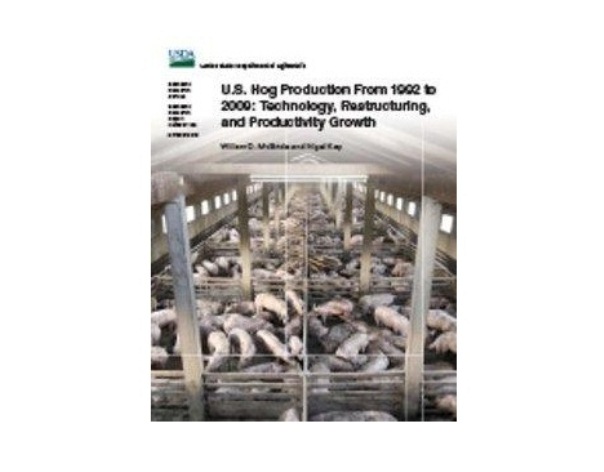October 28, 2013

The U.S. Department of Agriculture (USDA) report released last week provides some startling numbers: U.S. hog farm numbers dropped by 70% from 1991-2009, but hog farm inventories remained stable.
USDA’s Economic Research Service (ERS) says the result has been an industry with larger hog operations, increased specialization in a single phase of production, greater reliance on purchased feed rather than homegrown grain and increased use of production contracts.
This change in the structure of the U.S. pork industry has led to higher productivity and lower pork prices.
According to ERS the declining hog farm numbers suggest that the increased size of hog operations likely led to many small, high-cost operations ceasing to exist.
Like what you’re reading? Subscribe to the National Hog Farmer Weekly Preview newsletter and get the latest news delivered right to your inbox every week!
Specifically, the report said the average hog farm grew from 945 head of hogs sold or removed under contract in 1992 to 8,389 head in 2009. Specialized finishing operations increased their share of production from 22 to 77% during 1992-2004, while the share of production from farrow-to-finish operations fell from 65 to 18%.
In a reversal of trends, from 2004 to 2009 operations specializing in a single phase of production declined and farrow-to-finish production was slightly increased.
Higher corn and soybean prices during 2007-2009 raised feed costs considerably, the ERS report said.
The number of hog operations using production contracts increased from 5% of production in 1992 to 67% in 2004. Between 2004 and 2009, the share of hogs produced under contract grew only 4% to 71%. Fewer farrow-to-finish farms produced under contract. ERS said the growth in share of production from large-scale, farrow-to-finish operations was the likely cause of slowed growth in the use of production contracts on hog farms after 2004.
North Carolina’s rapid growth of hog production during the 1990s slowed as the decade came to an end because of the moratorium placed on expanded hog production in the state.
Meanwhile, the size of hog operations in mainly Iowa and Illinois grew during 1998-2004 as contract production in this area expanded. This trend continued during 2004-2009 as average production from both farrow-to-finish and feeder-to-finish operations increased in size.
Read more at http://www.ers.usda.gov/publications/err-economic-research-report/err158.aspx.
You might also like:
Market Observations Post-USDA Return
Beef Exports Strong, Pork Exports Slip
Management to Control Aggression in Group Housing
Defining Ideal Sow Body Condition
You May Also Like



